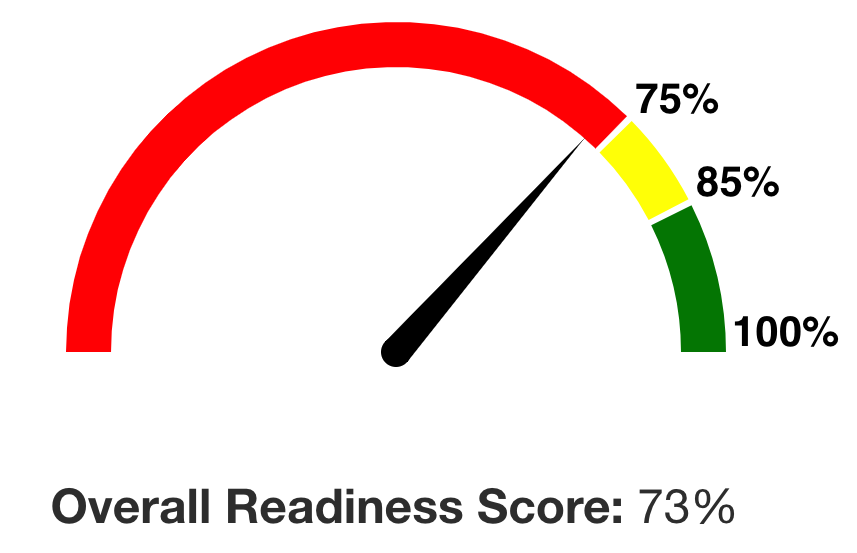Reflecting on some of the most common topics of discussion among capital project professionals, difficulties arose during the construction phase is on top of the list. Despite project team’s best efforts in front end planning, detailed design and schedule development, something was missing that caused the project to miss the mark. Why do these problems reoccur in capital projects? What can we do to ensure projects are truly construction ready before we start construction?
The Construction Industry Institute’s (CII) Construction Readiness Assessment (CRA) methodology provides a tremendous step forward. In Sandra MacGillivray’s recent post, she walked through basics of Construction Readiness Assessment – its capabilities, strengths and proven results. The Construction Readiness Assessment methodology brings remarkable capacity to project leaders to prevent premature construction and ensure we start the construction phase and remain productive throughout the entirety of the project.
In early November, I had the opportunity to present at the CII’s “Workshop on Construction Readiness – How can construction readiness be assessed?” in Houston, Texas. The workshop provided an ideal opportunity for participants from the Downstream and Chemicals sector group to discuss implementation considerations for this new methodology launched in August 2018 at the CII Annual Conference. Many ideas were exchanged and different perspectives shared that helped everyone develop a better understanding of the potential of Construction Readiness.
One “key concept” that was discussed was the simplistic nature of the methodology. The assessment includes 228 factors spanning 15 categories, making it especially useful as a “checklist” in early project development. It can bring “red flags” to the table quickly that can be monitored by the team as the project progresses. Because of its simplicity, it is feasible for one or two individuals to complete the assessment in about two hours. From an efficiency perspective, this sounds ideal. However, the true potential of the assessment is realized when the entire project team is involved in the assessment.
Why is this the case? Let’s take a look at the two main reasons this teamwork approach is so important in the implementation of the assessment.
1. Team Alignment for Readiness
First, the Construction Readiness Assessment is, at its core, a team alignment tool. The completion of the assessment serves as an opportunity for all members of the team to be aligned on the project goals and objectives. By working through the factors in a team meeting environment, all team members should come away with a better understanding of the gaps that need to be addressed to be ready for the start of construction. If there are critical gaps, there should be increased buy-in that comes for the discussion that unfolded during the meeting.
Conducting a CRA as a team definitely increases the time commitment to support the discussion on gaps. The intent is that if the team scores a factor as “no” or incomplete, they take a few minutes to discuss and capture the steps to get to a “yes” and improve their construction readiness. Responding “no” to factors such as
“Have interference checks been completed?” or
“Is the master schedule set up to support transition to turnover by systems?”
warrant a discussion surrounding next steps. CII’s research shows that engaging the team to ensure construction readiness delivers huge payoff – 20% improvement in cost performance and 22% improvement in schedule performance, compared to projects that are not construction ready.
2. Stakeholder Buy-In to Prevent Premature Start
The second reason for engaging entire project team in the Construction Readiness Assessment is to ensure buy-in on next steps when a project’s overall Construction Readiness Score is too low, and we need to prevent a premature start of construction.
There is so much momentum when a capital project is getting ready to start construction, that holding it back even a few weeks to address critical gaps cannot be achieved without the buy-in and support of your project team.
During our workshop in Houston, Allen Rogers of Flint Hills Resources shared their experience on how hard the decision and how vital the team engagement was when they delayed a project start date not being construction ready. Allen expressed that if the assessment is completed solely by the project manager, and the project team wasn’t part of the process, you’ve got an uphill battle to make the right set of decisions to prevent a premature start.
Next Steps
If your current project or organization could benefit from a structured approach to construction readiness, contact us today to discuss next steps. To learn more about the Construction Readiness Assessment, download our “Introduction to the Construction Readiness Assessment” white paper or visit our “What is the Construction Readiness Assessment?” page.
About the Author
Behrooz is a Senior Project Consultant with Valency. He serves on CII’s Downstream & Chemicals sector committee and the Advanced Work Packaging Community of Business Advancement. Behrooz is a Project Management Professional (PMP), a Registered Education Provider (REP) with the Construction Industry Institute (CII), and has extensive experience in construction project management within the industrial, infrastructure, and building sectors. He holds a BASc in Civil Engineering, an MASc in Engineering Management, and a Ph.D. in Construction Engineering & Management from the University of Waterloo.
